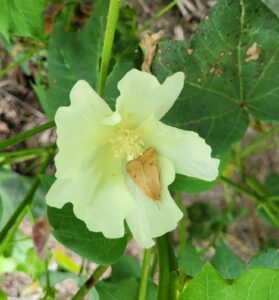I’ve received several calls over the past few days about large numbers of immature plant bugs being found 7-10 days after insecticide applications. Corn is quickly drying down, pigweed and other wild hosts have flowered and cotton is at peak bloom in several areas. This makes cotton an ideal host for plant bugs and in some instances the only host. Our top tier products (Transform, Orthene, Diamond, Orthene + pyrethroid) are still controlling plant bugs well and are about the only options we have in August.
Diamond is an insect growth regulator (IGR) that’s primary activity is on plant bug nymphs. Generally speaking, smaller nymphs (1st-2nd) are easier to control with IGRs than larger nymphs. Fields with a high population of larger nymphs (3rd-5th) will see slower control ofplant bugs than fields with predominately small nymphs. Diamond’s efficacy isn’t usually apparent until 10-14 days post treatment. Checking behind Diamond 6 to 7 days post may not give you an accurate representation of what’s happening in your field. However, if nymph numbers, especially small nymphs, are increasing by day 10 retreatment may be justified. Getting the best control with Diamond requires knowing the size of your predominate plant bug nymphs are and a little luck on the timing. Also, Transform and Diamond don’t have activity on stink bugs, the addition of a pyrethoid or organophosphate to oversprays will take care of stink bugs in cotton
A quick note on Orthene, its well known that Orthene’s rainfastness is slow and if you can, give it a full 24 hours. I’ve seen my best control with Orthene when we have 48 hours of no rainfall behind an application. Adjuvants may help decrease the time required to be rainfast somewhat but there’s no substitution for a day of dry weather behind an application.

Bollworm egg lay is picking up in a few places around West TN. So far, I haven’t heard of any failures in 3-gene cotton in Tennessee or the Midsouth. It is highly unlikely you will have to spray for worms in any of our triple gene varieties. Our monitoring efforts of Bt corn, which can help forecast issues in cotton, have shown no survivorship in VIP corn. Double Pro varieties, which are equivalent to BG2, are heavily infested with worms and any BG2 cotton should be scouted closely and applications made on our 20% egg threshold.
Soybeans for the most part have been very quiet for much of the growing season. Recently, I noticed a large increase in kudzu bugs and stink bugs infesting soybeans, this is to be expected since we’re reaching the later part of summer. Also, with much of our corn acres reaching dent or past, I would expect to see a decent surge in stink bug numbers as we continue into August. Pyrethroids are good options for almost every pest we face in beans late season. Lingering populations of resistant brown stink bugs may require a premix insecticide (Endigo, Leverage, etc) or the addition of a 0.5 lb of orthene with your pyrethroid.

